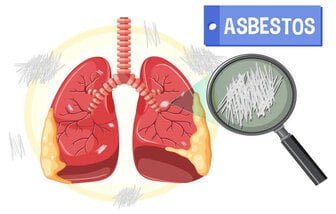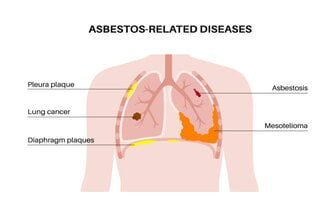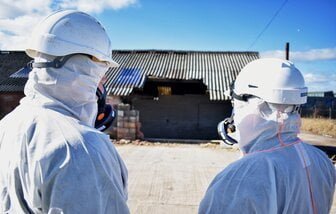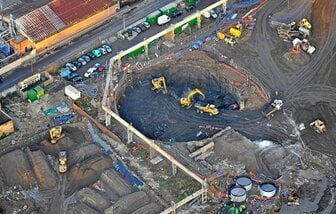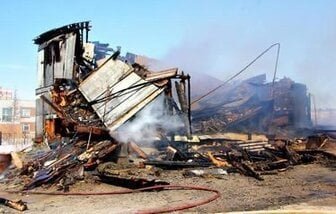Asbestos compensation & Your Legal Rights
Learn about the dangers of asbestos exposure, the legal framework for seeking compensation, and the types of claims available for asbestos-related illnesses like mesothelioma and asbestosis. Discover how to navigate the claims process, gather necessary evidence, and find legal and emotional support to secure the compensation and justice you deserve.
Understanding Asbestos Compensation: Your Guide to Seeking Justice
Asbestos, a naturally occurring mineral, has been utilized for centuries due to its remarkable properties. Known for its resistance to heat, fire, and chemicals, as well as its sound absorption capabilities, asbestos became a popular material in various industries.
Historically, it was extensively used in construction, shipbuilding, automotive manufacturing, and several other sectors. Its inclusion in products like insulation, roofing materials, cement, and even household items was widespread, largely because of its durability and affordability.
However, the health hazards associated with asbestos exposure were not initially understood, leading to tragic consequences. When asbestos fibers are disturbed, they can become airborne and, if inhaled or ingested, pose severe health risks.
The tiny, durable fibers can lodge in the respiratory system and other tissues, causing chronic inflammation and scarring. Over time, this can lead to serious illnesses, including asbestosis, lung cancer, and mesothelioma, a rare but aggressive cancer affecting the lining of the lungs, abdomen, or heart.
The impact of asbestos-related diseases is profound. According to the World Health Organisation (WHO), approximately 125 million people globally are exposed to asbestos in the workplace.
Annually, over 107,000 deaths are attributed to occupational exposure to asbestos. In the United States alone, the Environmental Working Group Action Fund estimates that asbestos-related illnesses cause nearly 15,000 deaths each year. These statistics highlight the critical need for awareness, prevention, and compensation for those affected.
Understanding the dangers of asbestos is essential for addressing the health crises it continues to cause. Despite regulations and bans implemented in many countries, the legacy of asbestos exposure remains, affecting countless individuals and their families.
Acknowledging the severity of asbestos-related diseases and the importance of seeking justice for victims is the first step toward mitigating this ongoing issue.

The legal framework for asbestos compensation is rooted in a comprehensive body of legislation and regulatory oversight designed to protect individuals from the harmful effects of asbestos exposure. Key legislation includes the Occupational Safety and Health Act of 1970, which established the Occupational Safety and Health Administration (OSHA). OSHA is responsible for setting and enforcing protective workplace safety and health standards, including regulations specifically targeting asbestos exposure. These regulations mandate strict guidelines for asbestos handling, removal, and disposal, ensuring that employees are safeguarded against occupational exposure.
Additionally, the Environmental Protection Agency (EPA) plays a crucial role in regulating asbestos use. Under the Toxic Substances Control Act (TSCA), the EPA has implemented various rules to manage asbestos risks, including the Asbestos Hazard Emergency Response Act (AHERA) which requires schools to inspect for asbestos and implement management plans to prevent exposure. The EPA’s comprehensive approach also encompasses the Clean Air Act, which governs the release of airborne contaminants, including asbestos fibers, to protect public health.
Individuals exposed to asbestos have specific legal rights to seek compensation for the adverse health effects caused by such exposure. These rights are encapsulated in the ability to file various types of claims. Personal injury claims can be filed by individuals who have developed diseases such as mesothelioma, asbestosis, or lung cancer due to asbestos exposure. Wrongful death claims can be pursued by the families of victims who have succumbed to asbestos-related illnesses. Moreover, workers’ compensation claims may be available for those exposed to asbestos in the workplace, providing financial support for medical expenses and lost wages.
Understanding the legal landscape of asbestos compensation is imperative for affected individuals seeking justice. The interplay of OSHA and EPA regulations ensures a robust protective framework, while the legal rights afforded to victims and their families facilitate the pursuit of rightful compensation for the harm endured due to asbestos exposure.
Asbestos compensation claims are vital for individuals who have suffered due to asbestos exposure. There are several types of claims that one can file, each with its own set of criteria and potential damages. These include personal injury claims, wrongful death claims, and workers’ compensation claims.
Personal injury claims are filed by individuals diagnosed with illnesses such as mesothelioma, asbestosis, or other asbestos-related conditions. To be eligible, the claimant must demonstrate that their exposure to asbestos directly caused their illness. Compensation in personal injury claims can cover medical expenses, lost wages, pain and suffering, and other related costs. For example, a retired shipyard worker successfully claimed compensation after proving his mesothelioma was due to prolonged asbestos exposure at work.
Wrongful death claims are brought forth by the family members of individuals who have died due to asbestos-related illnesses. The criteria for these claims include proving that asbestos exposure was the cause of death and that the deceased was exposed to asbestos in a manner that qualifies for compensation. Damages in wrongful death claims can include funeral expenses, loss of financial support, and loss of companionship. A notable case involved the family of a construction worker who died from mesothelioma; they were awarded compensation after demonstrating his exposure to asbestos on job sites.
Workers’ compensation claims are filed by employees who were exposed to asbestos in the workplace. These claims do not require proof of negligence but must show that the illness is work-related. Eligible claimants can receive benefits for medical treatment, rehabilitation, and a portion of lost wages. An example of a successful claim involved an auto mechanic who developed asbestosis after years of handling brake linings containing asbestos. He received workers’ compensation benefits to cover his medical and financial needs.
Understanding the types of asbestos compensation claims and their criteria is crucial for victims seeking justice. Whether through personal injury, wrongful death, or workers’ compensation claims, pursuing these avenues can provide significant relief and acknowledgment of the harm caused by asbestos exposure.
Filing an asbestos compensation claim can seem overwhelming, but understanding the process can make it more manageable. The first step is to gather comprehensive evidence that supports your claim. This typically involves collecting detailed medical records that confirm your diagnosis of an asbestos-related illness. These records should include pathology reports, imaging scans, and any other documentation from your healthcare providers that detail your condition and its link to asbestos exposure.
Equally important is assembling your employment history. This documentation should cover all periods of employment, especially those during which you were exposed to asbestos. Specific details about your job roles, the duration of employment, and the nature of your exposure are crucial. This may involve obtaining past employment records, statements from coworkers, and any other relevant documentation that can substantiate the claim. The more detailed and precise your documentation, the stronger your case will be.
Once you have gathered the necessary evidence, the next step is to seek legal representation. It’s essential to choose a lawyer or law firm specializing in asbestos cases. These professionals possess the specialized knowledge and experience required to navigate the complexities of asbestos litigation. When selecting legal representation, consider their track record of success in similar cases, client reviews, and whether they operate on a contingency fee basis, meaning they only get paid if you win your case.
Your attorney will guide you through the subsequent steps, including filing the claim, negotiating settlements, or potentially going to trial. They will also help ensure all documentation is in order and present your case compellingly. Legal representation is crucial because asbestos compensation claims often involve significant legal and medical complexities that can be challenging to navigate without expert guidance.
By following these steps—gathering evidence, documenting your employment history, and choosing the right legal representation—you improve your chances of securing the compensation you deserve. This process not only aids in seeking justice but also provides financial support to cover medical expenses and other related costs.
Seeking compensation for asbestos-related illnesses can be a daunting and complex process, fraught with numerous challenges and obstacles. One of the primary difficulties faced by claimants is proving exposure to asbestos. Given the long latency period of asbestos-related diseases, which can span several decades, it is often challenging to pinpoint the exact source and period of exposure. Gathering sufficient evidence, such as employment records, witness testimonies, and medical reports, is crucial but can be time-consuming and arduous.
Another significant hurdle is dealing with uncooperative employers or companies. Many businesses that historically used asbestos may no longer be operational, making it difficult to obtain necessary documents or hold them accountable. In some cases, companies may dispute the claims or deny responsibility, further complicating the process. It is essential for claimants to be persistent and thorough in their efforts to collect and present evidence that clearly establishes the link between their illness and asbestos exposure.
Navigating the complex legal procedures involved in asbestos claims can also be overwhelming. The legal landscape surrounding asbestos compensation is intricate, involving various statutes of limitations, jurisdictional issues, and specific procedural requirements. Claimants may find it challenging to understand and comply with these regulations, which can result in delays or even the dismissal of their claims. Engaging experienced legal counsel who specializes in asbestos litigation can significantly improve the chances of a successful claim by ensuring that all legal requirements are met and providing expert guidance throughout the process.
To overcome these challenges, it is crucial to adopt a strategic approach. Claimants should meticulously document their work history and potential asbestos exposure sources. Additionally, they should seek medical evaluations from specialists who can provide comprehensive reports linking their condition to asbestos exposure. Persistence and thoroughness are key; claimants should be prepared to follow up on leads and gather as much supporting evidence as possible.
In conclusion, while the path to obtaining asbestos compensation is fraught with obstacles, understanding these challenges and adopting effective strategies can significantly enhance the likelihood of success. Persistence, thorough documentation, and expert legal assistance are essential components of building a strong case and achieving justice for asbestos-related illnesses.
Asbestos trust funds were established to provide financial compensation to individuals who have suffered from asbestos-related diseases. These funds emerged out of the bankruptcy proceedings of numerous asbestos companies, which set aside substantial amounts of money to resolve the claims of affected individuals. The establishment of asbestos trust funds was a crucial step in ensuring that victims could still seek compensation, even if the responsible companies had declared bankruptcy.
The operation of asbestos trust funds is highly regulated and overseen by trustees who are responsible for managing the funds and processing claims. These trustees ensure that the funds are used appropriately and that the compensation is distributed fairly among eligible claimants. The funds are designed to be self-sustaining, with the goal of compensating current and future claimants over an extended period.
To access asbestos trust funds, individuals must go through a specific claims process. This typically involves submitting detailed information about their asbestos exposure and medical diagnosis. Claimants may need to provide evidence such as medical records, employment history, and documentation of asbestos exposure. The claims process can vary depending on the specific trust fund, but generally, it includes an assessment of the claim’s validity and the calculation of the payout amount.
Potential payouts from asbestos trust funds depend on several factors, including the severity of the illness, the claimant’s age, and the specific trust fund’s guidelines. The compensation amounts can range from thousands to hundreds of thousands of dollars, depending on the circumstances of each case. It is important for claimants to understand that the process can be complex and may require legal assistance to navigate effectively.
For those seeking compensation, it is advisable to consult with an experienced attorney who specializes in asbestos-related claims. An attorney can help guide claimants through the process, ensure that all necessary documentation is provided, and maximize the potential for a successful claim. By understanding the role of asbestos trust funds and the claims process, victims of asbestos exposure can better navigate their path to obtaining the compensation they deserve.
Dealing with the aftermath of asbestos exposure can be overwhelming, not only physically but also financially and emotionally. Fortunately, various forms of financial assistance are available to help victims and their families navigate this challenging time. One of the primary financial aids is settlements. Legal settlements from asbestos litigation can provide substantial compensation to cover medical expenses, lost wages, and other related costs. Additionally, victims may be eligible for pensions provided by government programs or private entities, which offer monthly stipends to support ongoing needs.
Another significant source of financial support is social security benefits. Individuals diagnosed with asbestos-related illnesses such as mesothelioma may qualify for Social Security Disability Insurance (SSDI). This federal program offers financial assistance based on the severity of the illness and the individual’s work history. Supplemental Security Income (SSI) is another federal assistance program that can be beneficial, particularly for those with limited income and resources.
While financial assistance is crucial, the emotional and psychological impact of asbestos-related illnesses cannot be overlooked. Victims and their families often face significant emotional distress, including anxiety, depression, and grief. Support groups offer a valuable resource for emotional support, allowing individuals to connect with others who are facing similar challenges. These groups provide a safe space to share experiences, coping strategies, and offer mutual encouragement.
Counseling services are another vital resource, providing professional psychological support to help individuals manage their emotional well-being. Licensed therapists who specialize in dealing with chronic illness and grief can offer tailored coping mechanisms and therapeutic interventions. In addition to individual counseling, family therapy can be beneficial, helping families navigate the complex emotions and dynamics that arise when a loved one is diagnosed with an asbestos-related illness.
Various non-profit organizations also offer resources and support services specifically for asbestos victims and their families. These organizations may provide financial grants, educational materials, and access to a network of professionals dedicated to assisting those affected by asbestos exposure.
Overall, a combination of financial assistance and emotional support resources can significantly alleviate the burden faced by asbestos victims and their families, helping them to focus on recovery and well-being.
The journey through understanding asbestos compensation is pivotal for individuals and families affected by asbestos-related illnesses. This blog post has delineated the essential facets of asbestos compensation claims, including the history of asbestos use, the health risks associated with exposure, and the legal avenues available for seeking justice. Recognizing the multifaceted nature of this issue underscores the importance of informed action and professional support.
Asbestos exposure can lead to severe health conditions, such as mesothelioma, lung cancer, and asbestosis, often with life-altering consequences. Given the gravity of these illnesses, seeking justice through compensation claims is not just a legal right but a crucial step in securing financial stability and peace of mind for affected individuals and their families. The process of filing a claim can be intricate, necessitating the guidance of legal experts who specialize in asbestos litigation. These professionals can navigate the complexities of the legal system, ensuring that victims receive the compensation they deserve.
Moreover, it is essential for those impacted by asbestos exposure to connect with support networks. Joining a support group can provide emotional backing and practical advice from others who have undergone similar experiences. These communities can be invaluable in helping individuals cope with the challenges posed by asbestos-related diseases.
If you or a loved one has been affected by asbestos exposure, taking prompt action is crucial. Contacting a specialized lawyer is the first step towards filing a claim and seeking compensation. Additionally, engaging with support groups can offer the necessary emotional support and resources. Remember, seeking justice is not only about financial compensation; it is also about holding responsible parties accountable and preventing further harm.
By taking these steps, affected individuals can move forward with a sense of empowerment and hope, knowing they have taken action to secure their future and that of their loved ones.
Asbestosis Symptoms
Asbestosis is a chronic lung disease primarily caused by prolonged exposure to asbestos fibers. Asbestos, once widely used in construction and various industries due to its fire-resistant properties, poses significant health risks when its fibers are inhaled.
Asbestos-Related Diseases
Learn about asbestos, its industrial uses, and the serious health risks associated with exposure. Discover how to identify asbestos-containing materials, conduct surveys, and implement safety measures to prevent exposure.
Asbestos Lung Cancer
Once inhaled, asbestos fibers can lodge in the lung tissues, leading to inflammation and scarring over time. This can culminate in serious health issues, the most severe of which include asbestosis, mesothelioma, and asbestos lung cancer.
Asbestos Inhalation
Asbestos is a hazardous mineral known for its durability and heat resistance, historically used in various industries. Inhalation of asbestos fibers can lead to severe health issues such as asbestosis, lung cancer, and mesothelioma.
What is Mesothelioma
The most common sites for this malignancy are the pleura (lining of the lungs), peritoneum (lining of the abdomen), and pericardium (lining of the heart). Due to its aggressive nature, mesothelioma poses significant challenges in diagnosis and treatment
Asbestos Compensation
Learn about the dangers of asbestos exposure, the legal framework for seeking compensation, and the types of claims available for asbestos-related illnesses like mesothelioma and asbestosis. Discover how to navigate the claims process
Asbestos & Your Health
Learn about asbestos, a fibrous mineral widely used in construction until it was banned in the UK in 1999 due to significant health risks. Discover the serious conditions such as asbestosis, lung cancer, and mesothelioma caused by asbestos exposure.
Asbestos Removal
Total Asbestos is a leading asbestos removal company in the UK, offering comprehensive services including surveys, testing, and removal. With a focus on safety, regulatory compliance, and cutting-edge technology, they manage projects across residential, commercial, industrial, and public sectors.
Types of Asbestos
Asbestos has been included in many materials in the last 150 years. Three common types of asbestos can be found in buildings: Crocidolite (Blue Asbestos), Amosite (Brown Asbestos), Chrysotile (White Asbestos)
Managing Asbestos
The strategy of the HSE is to ensure that those involved in the repair, removal or disturbance of asbestos containing materials (ACMs), such as insulation coatings or insulation boards, are licensed & competent
What is Asbestos and why its so dangerous ?
Asbestos was commonly used as a construction material in the UK between the 1950s and 1980s in particular. If your home was built between these years, chances are that you are living with Asbestos
Control Of Asbestos Regulations 2012
The control of asbestos regulation 2012 came into force on 6 April 2012. In practice the changes are fairly limited. They mean that some types of non-licensed work with asbestos now have additional requirements, i.e. notification of work, medical surveillance and record keeping.
Asbestos In The Workplace
Learn about asbestos, its types, and the health risks associated with exposure. Understand the importance of managing asbestos in the workplace, the UK’s Control of Asbestos Regulations 2012, and the role of the Health and Safety Executive (HSE) in enforcing these regulations. Discover the safety measures necessary to protect workers
Brownfield Land Remediation Contractors
We have tackled some of the most complex remediation projects undertaken in the United Kingdom, surpassing industry standards. Our diverse range of experience and expertise sets us apart and we continually deliver to the highest standards
Total Asbestos Consultancy
Total Asbestos stands as a premier provider of comprehensive asbestos consultancy services across the UK. Renowned for their expertise and unwavering commitment to safety, Total Asbestos offers a wide array of services designed to address the multifaceted challenges posed by asbestos.
Let's Work Together
Please complete the form below and someone from the Total team will be in touch to discuss your asbestos requirements For urgent needs, our customer support team is available through various channels. You can reach us via phone during business hours, or through our dedicated email support. We are committed to providing timely assistance and ensuring your asbestos concerns are addressed promptly and professionally.

